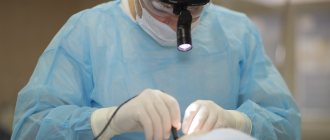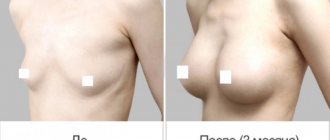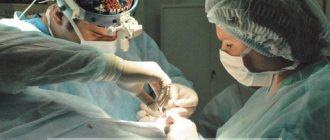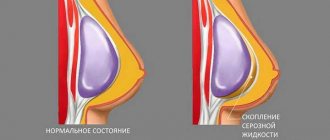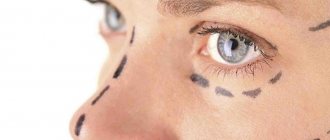Almost all women diagnosed with breast cancer undergo surgery and/or radiation therapy. And many of them are concerned that after breast surgery, pathological scars may form - atrophic, hypertrophic and keloid. Scars on the body may also appear after chemotherapy.
Young women and smokers are more likely to develop scar tissue. And they want plastic surgery to get rid of disinfecting scars, but it is not able to completely solve this problem.
By understanding the causes of scar formation and the factors that determine the extent of their growth, you can reduce the external signs of breast cancer treatment.
Don't say goodbye to femininity!
Surviving a mastectomy (removal of the breast) is difficult at any age. But for young women, such a loss is especially difficult. Of course, there are prosthetics, comfortable underwear and even swimsuits, the wearing of which makes the defect invisible to others. Nevertheless, many women still turn to plastic surgeons because otherwise they do not feel like they are worthwhile.
Article on the topic Go to the mammologist. Breast cancer in its early stages can be defeated
Breast reconstruction improves the psycho-emotional state, self-esteem, physical activity, as well as the family and, of course, sex life of a woman. Thus, in 2008, a study was conducted in France that showed that 64% of families break up after the wife had her breasts removed due to cancer. But when performing reconstruction, the same figure was only 13%.
Methods for the prevention and treatment of pathological scars
Although scarring cannot be prevented, there are ways to manage it so that it heals properly and is less noticeable over time. Care should begin immediately after surgery and continue for at least a year—the general period of time during which scarring is complete and skin discoloration tends to normalize.
Postoperative care
One of the best ways to reduce scarring is to avoid infection after surgery. This is especially true when you return home from the hospital with surgical drains.
In addition to keeping drains clean and dry, it is important to avoid letting them hang down as they can fall out and provide easy access for bacteria. After removal, you will need to follow your doctor's instructions regarding dressing changes.
Smoking can delay healing and should be stopped if you are going to minimize scarring. You should also avoid drinking alcohol, as this can lead to dehydration, reducing the flow of oxygen and immune cells to the site of injury.
You'll also be well served to avoid sun exposure, which can promote inflammation and make the scar even more noticeable. If you must be outside, wear a light top until your skin is completely healed and apply sunscreen.
Long-term recovery
Once the wound has healed sufficiently and your doctor gives you the all clear, you can help with recovery by engaging in daily scar tissue massage. Known to physical therapists as transverse friction massage, this technique involves gentle manipulation of the skin above and below the incision, starting from the collarbone to the lower ribcage and extending from the sternum to the armpits.
Physical therapists may also use deep tissue and soft tissue massage to relieve pain and tightness. Gentle stretching and arm exercises are also recommended to restore upper body mobility and gently release tight tissue. Acupuncture may also be used to reduce pain.
If you are prone to keloids, talk to your doctor about steroid injections, which can soothe inflammation and prevent tissue overgrowth.
Cosmetic options
Once the scar has completely healed, chemical peels, laser therapy, and topical bleaching can improve the appearance of the scar, although results vary widely and are generally less effective in women with dark skin.
Fat injections and dermal fillers are also sometimes used to support skin depressions caused by large incisions. Wait at least a year before exploring options like these.
Another unique way to deal with a scar is to cover it up with a tattoo.
When is it possible
Many women (especially young ones) think about breast reconstruction even before breast removal or immediately after. But the question of when restoration can be carried out cannot be answered unambiguously. Much depends on the stage of the disease and the type of tumor associated with the risk of relapse, as well as on whether the patient has had radiation and/or chemotherapy or is just about to undergo it. Therefore, this question should only be addressed to your doctor. You cannot begin plastic surgery until postoperative treatment has been completed in full.
From stress to obesity. Doctor about factors influencing the development of breast cancer Read more
In addition, there are contraindications, both absolute, which make such an operation impossible in principle, and relative (in this case, the intervention will have to be postponed until better times). Among the absolute contraindications:
- late stage or locally advanced breast cancer (from stage IIIb), as well as combined cancer;
- severe concomitant pathologies (including diabetes mellitus, poor blood clotting, dysfunction of the endocrine system);
- relapse of the disease.
Article on the topicWhere are the wizards? How to choose a plastic surgeon
Relative contraindications are:
- unfavorable molecular type of breast cancer (this is a conditional contraindication, it only indicates an increased risk of relapse);
- infectious diseases and any diseases in the acute stage;
- diseases of the mammary glands (including mastopathy);
- chronic purulent processes;
- minor age;
- pregnancy;
- pronounced radiation reaction of the skin after radiotherapy.
Postoperative period
Breast amputation, regardless of typology, is a complex invasive intervention. You will have to spend about a week in the hospital, then the patient will have a recovery period lasting up to 3 months. After a mastectomy without plastic surgery, the operated patient will stay in the clinic for 4 days. In the first month, visits to the inpatient department are required for regular dressing changes and examinations.
When the anesthesia wears off, severe pain begins, lasting about 4-6 days. During this period, painkillers are usually prescribed. The patient must wear a drainage system for a week. Since you are sometimes discharged home with tubes attached to your body, the nurse will tell you in detail how to avoid damaging the device and dressing. You can get up and move around a little the day after surgery. In the future, wearing a corset and compression garments is recommended. Under no circumstances should you lift heavy objects or make sudden movements.
Disability after invasion is due if the diagnosis that led to the mastectomy is breast cancer. The intervention is followed by mandatory chemotherapy and radiation therapy, the consequences of which deprive the woman of her ability to work. Usually the patient is assigned a second disability group with re-examination after a year.
Who to trust
There are a lot of plastic surgery clinics today. But patients who have undergone a mastectomy are a special category. And they definitely shouldn’t get new breasts done in a regular clinic. Plastic oncology surgery is a rather labor-intensive field, and its main difficulty is to determine the likelihood of a favorable outcome of cancer treatment. The decision whether or not to carry out reconstruction depends on this.
Therefore, breast restoration should be performed by a reconstructive oncologist surgeon with experience in breast cancer. Or, before the operation, there must be a face-to-face consultation of two specialists (a plastic surgeon and an oncologist).
The operation is not a whim. In what cases is mammoplasty indicated? More details
How it's done
The “gold standard” is a two-stage breast reconstruction. The first stage, which is carried out either immediately upon removal of the mammary gland, or later, during another operation, after complex treatment, is the installation of a tissue expander (expander). A sterile saline solution is periodically pumped into it over the course of 1–2 months, due to which it swells and stretches the skin to the required volume.
The second stage is replacing the expander with a silicone implant (of the selected volume and shape). At this stage, correction of the other (healthy) breast can be performed to achieve maximum symmetry. It can be increased with an implant, tightened or reduced.
The third stage is nipple restoration, which can later be supplemented with tattooing that imitates the appearance of the areola, and lipofilling to smooth out breast unevenness, especially in the axillary area where the lymph nodes were removed.
There are also a lot of alternative methods - for example, reconstruction with the patient’s own tissues from the back, abdomen, buttocks. Such flaps can be used in combination with implants. If the flap is taken from the abdomen, then abdominoplasty is performed at the same time, and the patient gains not only beautiful breasts, but also a slimmer waist. But patchwork operations are technically more complex.
Before mastectomy
Before the operation, the woman receives specific instructions that describe restrictions and other things she needs to know. The patient should tell her doctor about any medications, vitamins, or supplements she is taking. Taking certain substances may negatively affect the course of surgery. For a week or more before surgery, you should avoid taking medications that may increase the risk of excessive bleeding. These include aspirin, ibuprofen and other pain relievers and blood thinners (anticoagulants).
Immediately before the operation, 8-10 hours, you should stop eating and drinking. It is also worth preparing in advance for your stay in the hospital. Find out how long you plan to stay there. Pack a bag with a toothbrush, robe, and slippers to make your hospital stay more comfortable. Also, prepare something that will help you pass the time, such as a book.
A mastectomy without reconstruction usually takes one to three hours. This usually requires one extra day in the hospital, although more and more women are choosing to go home on the day of surgery.
If you have surgery to remove both breasts (double mastectomy) or breast reconstruction after a mastectomy, the surgery may take longer and your hospital stay after surgery may increase to several days.
To perform a sentinel node biopsy, a radioactive substance or blue dye is injected near the tumor before surgery and deposited in the sentinel lymph node. This will allow the surgeon to identify and remove the affected lymph nodes during surgery.
This is not dangerous
Many women worry that future breast reconstruction may make screening more difficult. But for this purpose, neither a flap of one’s own tissue nor an implant interferes, especially since CT or MRI, rather than mammography, is often used to control the disease. But with one condition: all studies must be carried out by qualified specialists in a specialized oncological institution; it is better to do them in the same place and with one specialist, so that it is possible to compare the picture over time. It is also important to observe the required frequency of research (every six months, a year, two, three and beyond).
Article on the topic
Corporate conspiracy or personal decision? Expert on mastectomy, Jolie and cancer
Price issue
Breast reconstruction can be carried out using funds from the Compulsory Medical Insurance Fund. However, in the last few years, compulsory health insurance has almost completely stopped paying for such operations. Today they are still done in some oncology clinics, but only 1-2 per month, since their implementation is unprofitable for both the hospital and the compulsory medical insurance. In addition, such a reconstruction has too many disadvantages. For reasons of economy, implants and expanders are used only from the cheapest manufacturers and often only in one size. Therefore, patients interested in a good aesthetic result often have to pay outright for reconstructive operations in government institutions.
Today it is possible to reconstruct the breast using high-tech medical care (high-tech medical care) in large oncology centers. In this case, the materials used are more modern and of high quality, but it is not always easy for patients to obtain a quota for such treatment. Sometimes this journey can take months. In addition, in hospitals that admit patients under quotas, there is also a waiting list.
Finally, you can undergo breast reconstruction at your own expense. Such an operation can cost from 70 thousand rubles for, for example, delayed installation of an expander on one side, to 500–700 thousand rubles for complex combined operations using bioflaps, own tissues with suturing of blood vessels under a microscope, as well as correction of a healthy breast.
Lymphostasis of the hand
All iLive content is reviewed by medical experts to ensure it is as accurate and factual as possible.
We have strict sourcing guidelines and only link to reputable sites, academic research institutions and, where possible, proven medical studies. Please note that the numbers in parentheses ([1], [2], etc.) are clickable links to such studies.
If you believe that any of our content is inaccurate, out of date, or otherwise questionable, please select it and press Ctrl + Enter.
Lymphostasis of the hand is a serious disease that causes persistent swelling. Let's look at the causes of the disease, treatment methods and preventive measures that will get rid of lymphostasis.
Lymphostasis is persistent swelling of tissues, which is formed due to disturbances in the outflow of lymph, that is, tissue fluid. As a rule, lymphostasis affects the lower extremities.
There are several factors that can be a direct cause of lymphostasis:
- Surgeries in which lymph nodes were removed.
- Erysipelas.
- Problems with lymphatic and venous vessels.
There are several stages of lymphostasis, each stage has its own symptoms and characteristics. The last stage of lymphostasis is elephantiasis or elephantiasis. This condition is characterized by a strong increase and thickening of the volume of the limbs, as well as trophic disorders of the subcutaneous tissue and skin and, as a result, disability of the patient.
Swelling, which becomes the main sign of lymphostasis, appears due to a minor inflammatory process. For example, after a bruise, there may be swelling of the soft tissues, this is due to the influx of lymphatic fluid.
After some time, the swelling goes away; compresses, injections and medications are used for this.
But there are disorders that are associated with the functioning of the lymphatic system, and then any bruise can lead to disturbances in the outflow of lymph.
With lymphostasis of the arm, patients experience chronic swelling, which significantly disrupts the structure of the skin. It compacts the top layer, on which ulcers subsequently form, and elephantiasis progresses.
[1], [2], [3], [4], [5], [6], [7]
